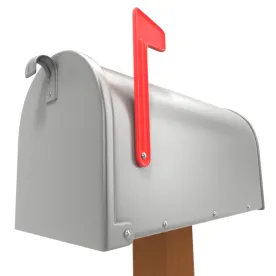Within the Internal Revenue Code (Code) is a rule commonly known as the “mailbox rule” or the “timely mailed, timely filed rule.” Under Code Section 7502(b), the date that an item—including a Tax Court petition—is postmarked and mailed can also be the date the item is considered filed. When an item is received after the filing deadline, the mailbox rule can make all the difference. There are, however, procedural requirements which must be satisfied. In Pearson v. Commissioner, the Tax Court, in a court-reviewed opinion, held that a Tax Court petition mailed with a Stamps.com postage label was timely filed under the mailbox rule.
Taxpayers generally have 90 days to file a petition with the Tax Court after receiving a notice of deficiency. In Pearson, the Tax Court received the taxpayers’ petition one week after the 90-day period expired, but the envelope in which the petition was mailed bore a Stamps.com postage label dated within the 90-day period. The administrative assistant who created the Stamps.com postage label supplied the court with a declaration under penalty of perjury stating that she went to a US Post Office the same day as the postage label date and mailed the petition. Attached to her declaration was a US Postal Service (USPS) “certified mail receipt” created by the administrative assistant bearing the same date as the Stamps.com postage label. In addition, the Internal Revenue Service (IRS) conducted its own research into when the USPS received the Tax Court petition. Through that research, which the IRS shared with the Tax Court, the IRS determined the taxpayers’ petition was “most likely deposited and collected” by the USPS on the last date for timely filing the petition. It was also established how long mail ordinarily takes to be received in Washington, DC (the location of the Tax Court) from Utah (where the petition was mailed).
For a postmark not made by the USPS, the mailbox rule generally requires that the postmark reflect a legible date within the timely filing period and that the document be received during the time when a document mailed and postmarked by the USPS would ordinarily be received. Treas. Reg. § 301.7502-1(c)(1)(iii)(B)(1). If the document is received after the period when a document mailed and postmarked by the USPS would ordinarily be received, to satisfy the mailbox rule the taxpayer may also establish that it was timely mailed, that the delay in receiving the document was due to a delay in the transmission of the US mail and was the cause of the delay. Treas. Reg. § 301.7502-1(c)(1)(iii)(B)(2). The IRS and the taxpayers agreed that the Stamps.com postage label was not a postmark made by the USPS and that under Treas. Reg. § 301.7502-1(c)(1)(iii)(B)(1), the taxpayers’ petition was timely mailed. The Tax Court relied on Auer deference principles to conclude that the IRS’s construction of its own regulations is entitled to deference. We previously discussed deference principles here. The Tax Court also concluded that the petition was timely filed under Treas. Reg. § 301.7502-1(c)(1)(iii)(B)(2).
A two-judge dissent concluded otherwise, asserting that a Stamps.com postage label should not qualify as a postmark not made by the USPS because it was not a “postmark.” The dissent noted that Code Section 7502(b) allows for postmarks not made by the USPS only if and to the extent provided by the tax regulations. Per the dissent, no version of the tax regulations provides for Stamps.com labels to be treated as postmarks. In the dissent’s view, the majority “attempt[ed] to jump this gap by invoking Auer [deference],” which the dissent did not believe should apply. The dissent further concluded that the majority had erroneously expanded Auer deference to an implication in or a logical inference from the IRS’s brief in the case.
Practice Point 1: The attention paid to this case shows the importance of the mailbox rule and the difficulty applying old tax regulations to modern technology. Apart from the majority and dissenting opinions discussed above, there was also a separate concurring opinion. Put simply, judges view the issue differently. When sending documents where the date of mailing is of importance, taxpayers are best served by using USPS certified or registered mail and maintaining a postmarked receipt. The IRS also authorizes certain private delivery services that may be used to satisfy the mailbox rule, but obtaining a USPS postmark may be considered a best practice. Of course, if a taxpayer has the ability to hand-deliver a petition and receive a stamp on a copy of the petition indicating the date it was filed, that is ideal.
Practice Point 2: Thirteen Tax Court judges (including the opinion’s authoring judge) agreed with the majority opinion in Pearson. Although not a focus of the court’s analysis, as pointed out by the dissent, the majority’s reliance on Auer deference principles may be cause for concern. We will continue to monitor how the Tax Court and other courts apply deference principles. Stay tuned.



 />i
/>i
